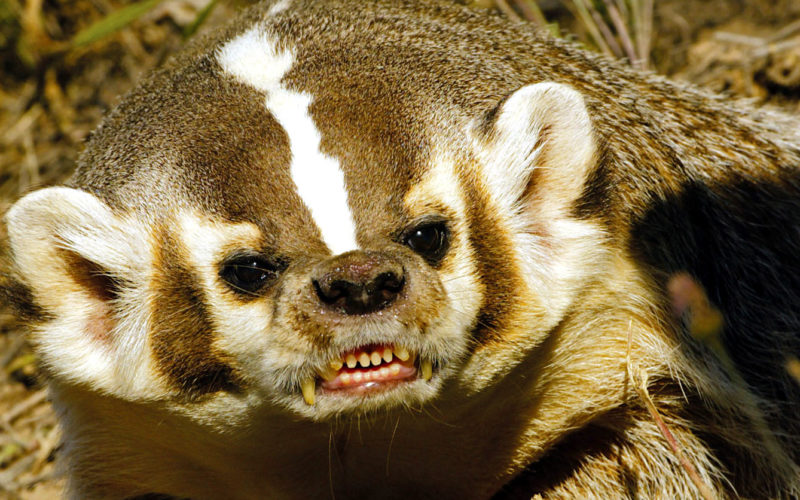Badgers making their way into Arkansas
AMANDA BANCROFT
Making Ripples
While the badger is a commonly seen animal in popular culture and literature, it is rarely seen in Arkansas. However, if you’re lucky (or perhaps unlucky) you might see one, especially in Northwest Arkansas. This belligerent burrower has a fascinating place in our local circle of life.
Sealander and Heidt wrote in their book “Arkansas Mammals” (1990) that “the badger is rare; only one specimen record from near Fayetteville, Washington County, exists.” Today, there is growing evidence that the badger has expanded its range and is now breeding in Arkansas. According to an article published in the Southwest Naturalist, the animal has expanded from Missouri into northeastern Arkansas, and a family group of five individuals was captured on camera at a den site. The Arkansas Game and Fish Commission has been requesting, via Facebook, badger sightings, photographs or video from anyone who may have seen one.
Their rarity and beauty create the desire to glimpse a badger in the wild, but their ferocity and aggression require us to keep a wide bubble of distance — the farther the better, perhaps. Some describe badgers as hostile, even to one another. Not to worry — if the individual isn’t cornered and can make an escape once it sees you, it will probably just run away. It’s no surprise that humans are their only real problem, as they are trapped for their pelts. Large predators like cougars, bears, bobcats and coyotes occasionally manage to kill a smaller badger. More often, coyotes collaborate with badgers to dig out prey from their burrows.
“They are master excavators that can dig faster than a man with a shovel,” write Sealander and Heidt. Sometimes, they’ll take over a groundhog burrow (probably eating its inhabitants) and remodel their new home to suit a badger’s needs. Not least of those needs is a good place for the female to give birth and nurse her young.
Badgers are so solitary that they typically come together only to mate, and males play no role in raising offspring. Mating occurs in late summer/early autumn, but delayed implantation prevents the pregnancy from progressing until late winter. Litter size is one to five (usually three). Young emerge in summer and stay near the burrow until autumn, but they can leave their mother as early as May. Badgers can live up to 15 years and usually die younger in the wild.
Partly because of their carnivorous diet, farmers often like to have a badger around. Badgers prey on pocket gophers, woodchucks (groundhogs), rabbits and rodents. They also eat snakes, bird eggs and nestlings, insects and other meat, including the kills made by other predators. A badger can attack a feeding bobcat and win its meal! This battle was filmed in the nature documentary series “Wild America” by Marty Stouffer. They eat rattlesnakes, which makes many people happy. But they also consume plant foods like vegetables, sunflower seeds and fungi. The badger is a unique predator in Arkansas, and it’s likely to stay in our state as long as habitat remains available.
Amanda Bancroft is a writer, artist, and naturalist living in an off-grid tiny house on Kessler Mountain. She and her husband Ryan blog about their adventures and offer tips to those wanting to make a difference at www.RipplesBlog.org.










